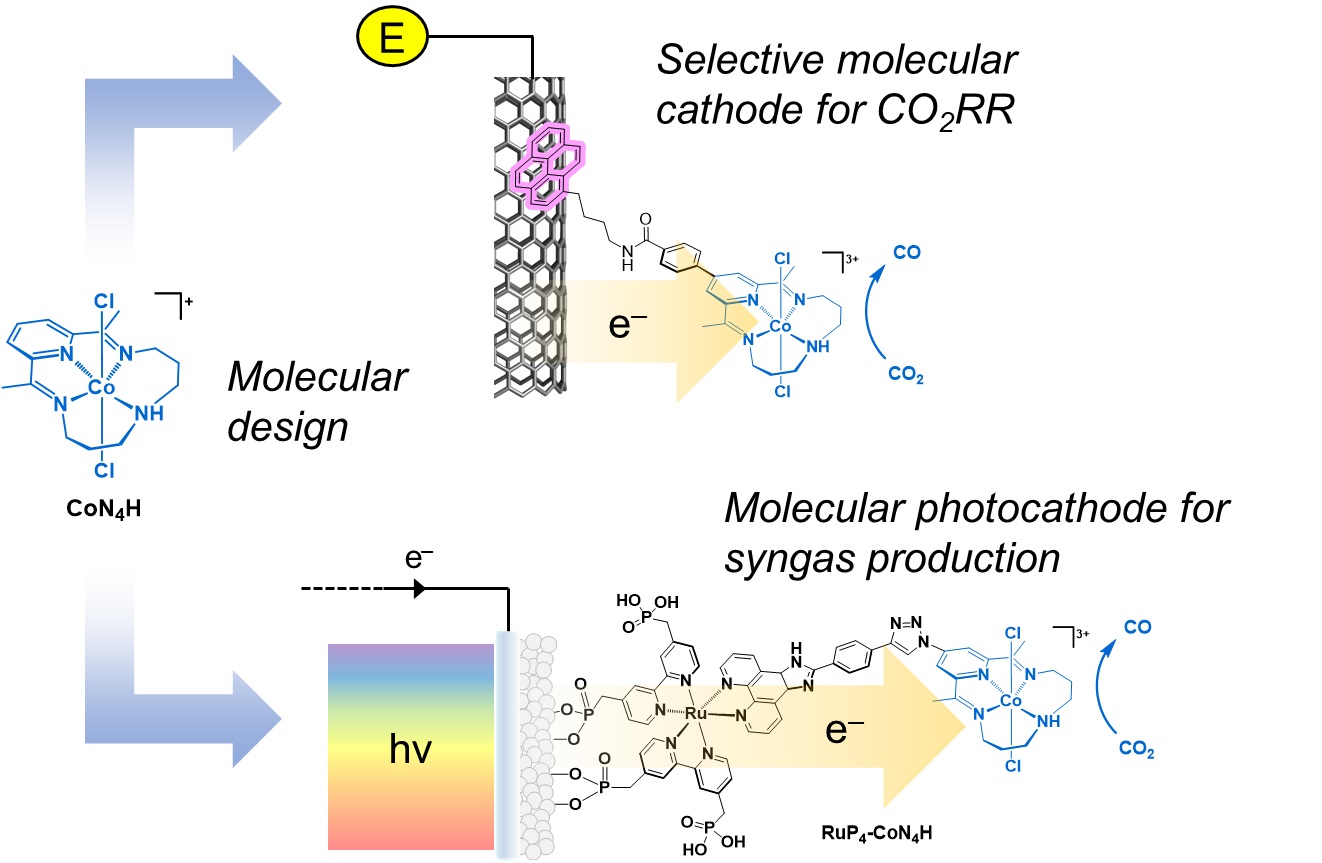Carbon dioxide (CO2) one of the main greenhouse gas responsible for global warming, can be recycled to produce green fuels or other carbon-based materials of interest. Researchers at IRIG have developed cobalt-based catalysts able to achieve such transformation, relying solely on renewable energy sources.
For many years, researchers at Irig have been working on the development of efficient and low-cost catalytic processes for the conversion and storage of intermittent renewable energy sources under the form of chemical bonds, to produce green fuels. They recently designed a new electrocatalytically active material capable to convert CO2 to carbon monoxide (CO) with a selectivity above 90% (10 remain percent being hydrogen), through the immobilisation of a molecular cobalt catalyst at a carbon nanotube-based electrode. This catalytic system is fast (20 000 catalytic cycles within 2h) and stable. The synthesis gas (CO/H2 mixture) obtained is a key intermediate toward the production of alcohols or more complex hydrocarbons.
To go one step further, in the framework of an international collaboration between Irig and the franco-vietnamese university of Hanoi, this catalyst has been integrated in a photo-electrochemical cell able to run using only solar irradiation to convert CO2 and water to synthesis gas. This artificial photosynthetic device relies on a molecular dyad combining the cobalt catalyst with a ruthenium-based dye. This smart association reproduces the key steps at work in photosynthetic organisms, allowing here to produce solar syngas.

Image: chemical structure of the macrocyclic cobalt catalyst and schematic presentation of the molecular cathode and photocathode materials developed at LCBM/SolHycat. (Crédit CEA)